When the sons of Great Britain barely knew how to put it on the map and General Custer was still two and a half centuries away from being turned upside down and given his first (I don't know if his last) pat on the ass, the engineers Spaniards were already "building" the US and the leather dragons , a special body within the army of the Hispanic monarchy, already dealt with the Comanches, the Apache, the Hopi or the Yuma.
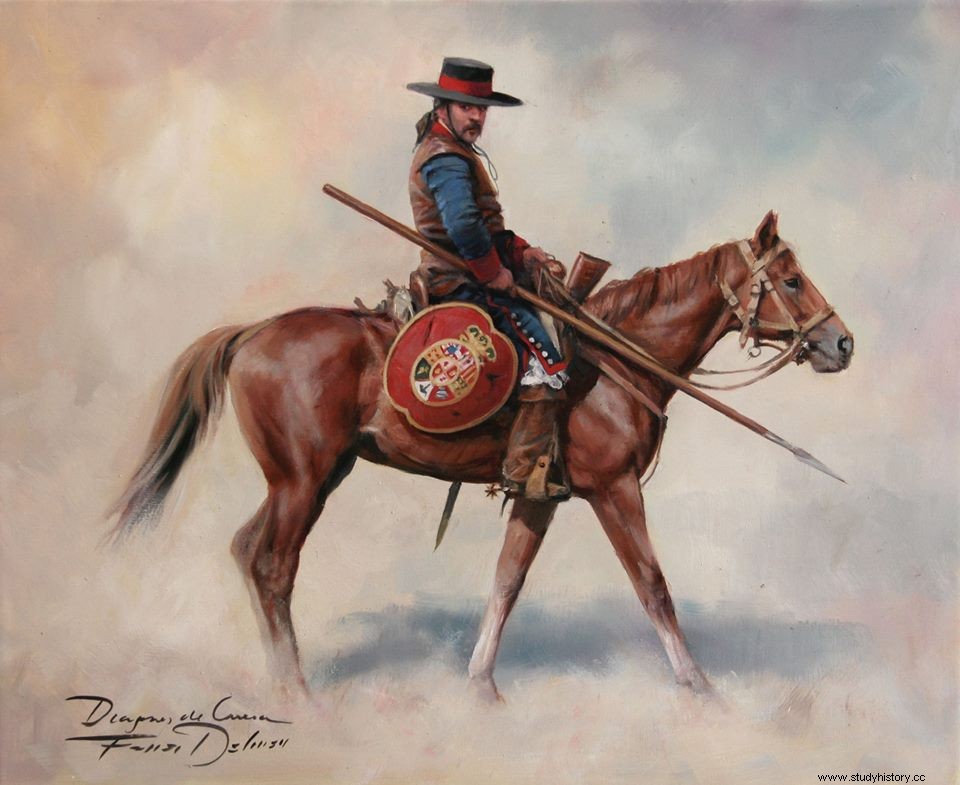
Leather Dragon – Ferrer Dalmau
The expeditions and explorations from Mexico to the north - made up of missionaries, soldiers, engineers, botanists, doctors, merchants, settlers... - mapped the territory; they studied the flora and fauna; they built missions (examples of mestizo architecture from the 16th century, building in adobe but incorporating Spanish technology to achieve larger and more complex buildings) and prisons (nothing to do with prisons, but with border forts); they founded cities and traced a road network of tens of thousands of kilometers (Royal Roads) of which Trajan himself would be proud. Because, in the image and likeness of the Romans and their roads, the Catholic Monarchs understood the importance of roads for the development and expansion of their kingdoms. The roads became the engine of the entire economic organization both on the peninsula and in the Indies. They allowed the transport of goods and people. They were therefore of public interest, and the Crown assumed their competence and placed them under its protection, legislating on them. That is why, as María Luisa Pérez González explains, in her study on The royal roads of America in legislation and in history…
The interest of the Crown was that the laws would encourage the roads to extend in all directions, thus seeing the entire territory articulated and consolidated. The royal road in America made it possible, perhaps more than any other institution, to link these new lands and their inhabitants to the rest of the Spanish empire.
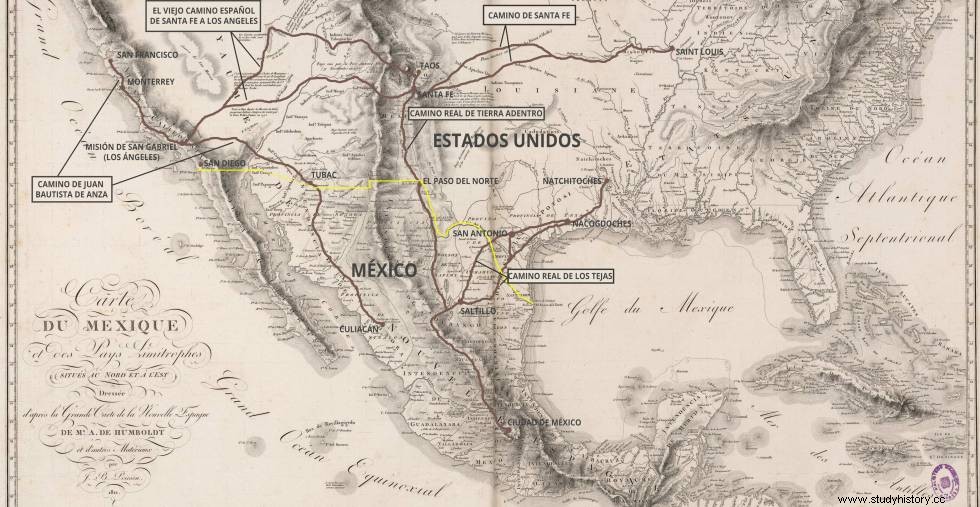
Of all the Spanish paths, five of them are part of the National Historic Trail (National Historic Trails) of the United States:Inland Royal Trail , the oldest of all -late XVI- that goes from Mexico City to Santa Fe (in the current state of New Mexico); Anza Road , which goes from Tubac (Arizona) to San Francisco (California); the Old Spanish Way, that goes from Santa Fe to Los Angeles (California); Camino Real de los Tejas , which runs from the Rio Grande to Natchitoches (Louisiana) and the Santa Fe Trail , from Santa Fe to St. Louis, Missouri.
Spain made the effort to open roads in this territory and used them during the time it was present there (until independence from Mexico in 1821), the English also used them in the Anglo-Saxon colonization - look where they found a quite structured and communicated-, and finally the Americans for the invasion of Mexico in 1846 and for its expansion towards the West in the second half of the 19th century.
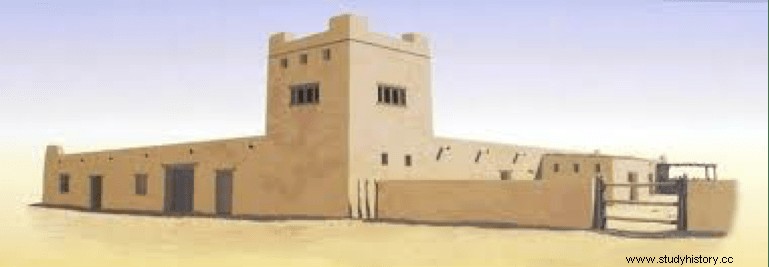
Having said that, which is not a small thing, I am going to return to the topic of the prisons which, as I have already told you before, have nothing to do with a penitentiary establishment. The presidio was a frontier post -a concept similar to the forts in cowboy and Indian movies-, square or rectangular in shape with stone or adobe walls a little over 100 meters on a side and several meters high, as well as a watchtower on the walls. Inside, enough space for the houses of officers, soldiers and their families, stables, warehouses and a chapel; and around, a conglomerate of merchants, artisans and some settlers dedicated to agriculture that turned the prison into something similar to a small town. The network of prisons, which extended from the Pacific Ocean to the Mississippi River (more than 3,000 km.) through extraordinarily wide, complex and varied territories, where mountains and valleys alternated with deserts or enormous plains with swamps and rivers, had as its function of a border defense bastion, the protection of royal roads, missions and ranches, the pacification of the territory and a strategy to populate the immense semi-desert domains of the Spanish empire in the north of the viceroyalty. Together with the missions, they were the only visible representation of the empire in such a vast and desert territory.
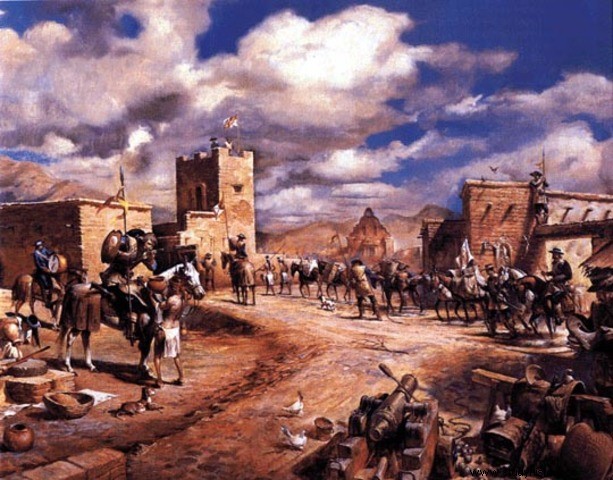
And here, in the prisons, we find the protagonists of this story:the leather dragons , a special body within the army of the Hispanic monarchy created to defend and patrol the border of the Viceroyalty of New Spain. Its name derived from the leather , a long sleeveless coat made of up to seven layers of skin, with great resistance to the arrows of the enemy Indians, which they wore as protection. At first they were used only by officers, but their use spread to the entire troop, becoming part of the regulation uniform. The dragons were very well armed, in addition to the cuera and the shield (shield) as defense, they had a shotgun, pistol, spear and sword (with the inscription "Don't take me out without reason. Don't sheathe me without honor ”). The garrisons of the presidios were very small and varied according to the situation of the same; thus, for example, in 1717 they ranged from 100 men from New Mexico to 15 from Durango, with an average of 40 to 50 men.
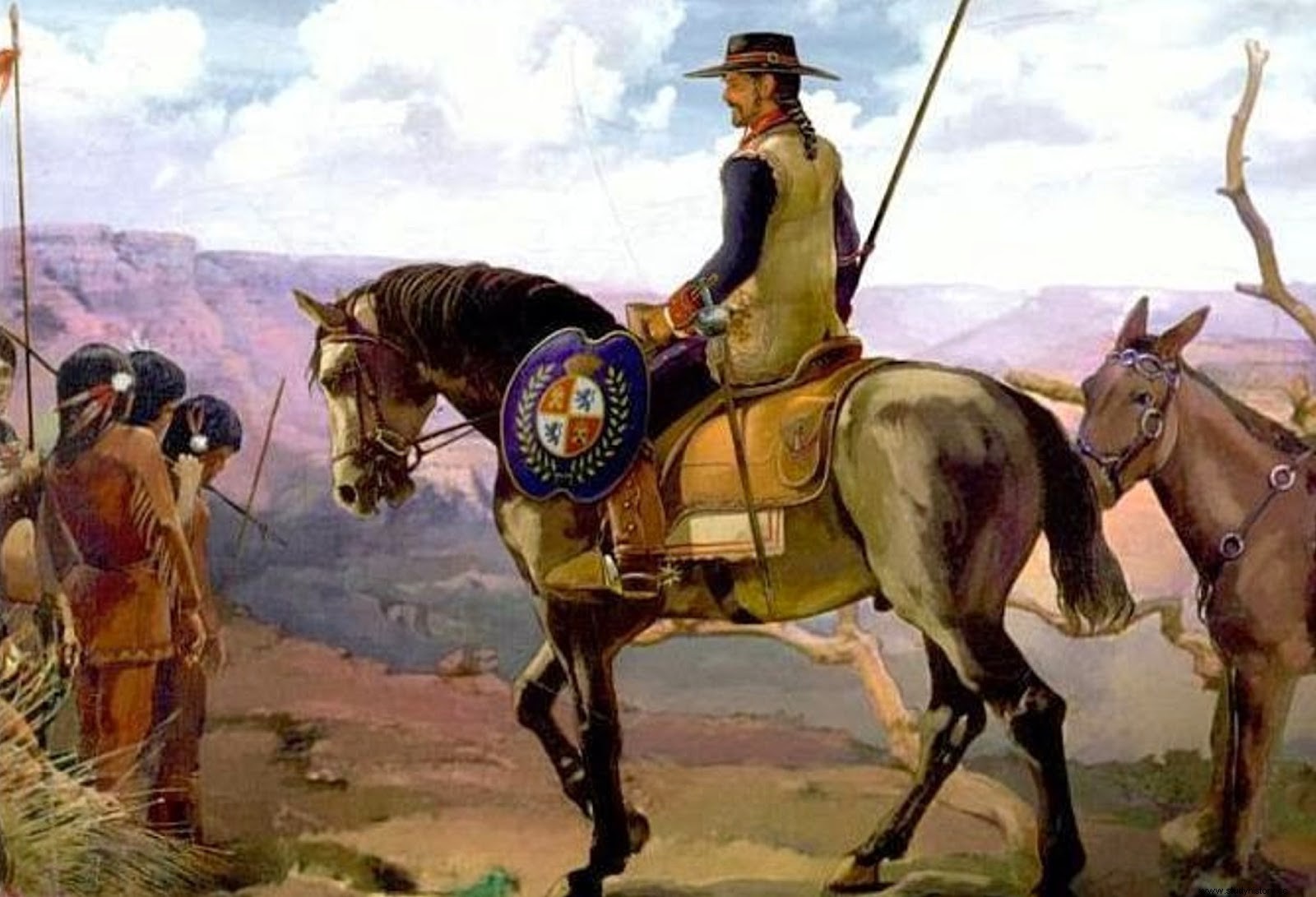
Truly hard was the life of the leather soldier, isolated from civilization, in the midst of a hostile world, both by some warlike Indians (especially Apaches and Comanches), and by the merciless climate. It is necessary to clarify that the Indians did not fight to conquer territory, the problem was that they were hunters and it was easier for them to seize the cattle and horses of the settlers, the missions or the presidios themselves, than to go hunting, which on the other hand it was not very abundant, which is why conflicts continually arose that the dragons had to quell. Thus, against the Apaches and Comanches of Texas, nomads and belligerents, a system was established with a predominance of defensive presidios, while with the Pimas of Arizona and the Yuma of California the relationship revolved around the missions, with which grouped and settled the indigenous population.
Their occupations were continuous:when they were not campaigning, they had to escort passenger or merchandise convoys, patrol the border and even take care of guarding the enormous horses that made up the prison garrison, since each of them had six horses and a mule. , having to have one of the six horses, day and night, saddled and equipped to go out on campaign immediately. Not everyone was good at leading this hard and sacrificial life. Despite all this, volunteers and recruits were not lacking. At first the composition of these units was completely of Spanish origin but little by little mulattoes and mestizos from Spanish America began to enter them, as well as Indians, accustomed to the strong climate of the region and, in addition, they were expert horsemen who knew the terrain. and excellent trackers. Between 1773 and 1781, 50% of the army was Spanish, 37% mestizo or mulatto, and the rest of Indian origin, although practically all of them were born in the Viceroyalty of New Spain. These soldiers enlisted for a period of 10 years that could be extended. For a very poor population, the soldada was a great attraction, in addition to the possibility of a life in the open air, far from the cities, and they had the right to medical assistance, a luxury in that time and region, and the possibility of a pension at the retire as well as, in many cases, lands around the prison.
At the end of the 18th century, the Leather Dragons fell into disuse due to improvements in firearms that made it better to carry out raids with lighter infantry units. They disappeared completely in the year 1815.
